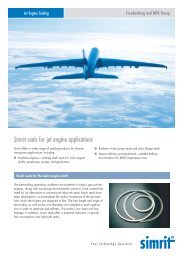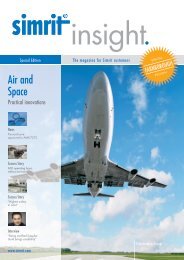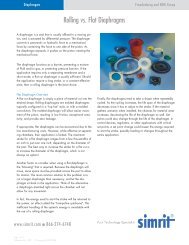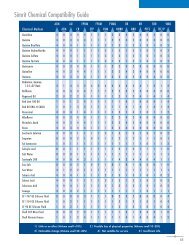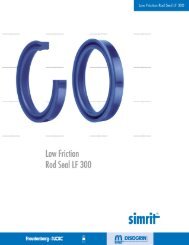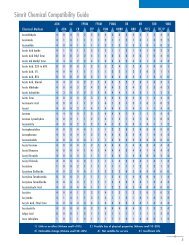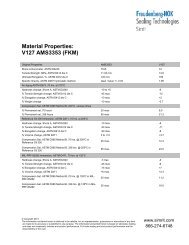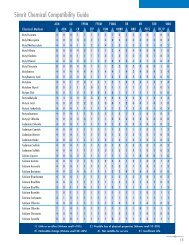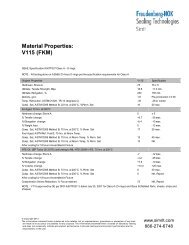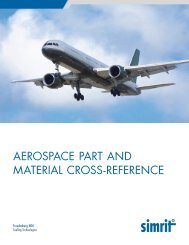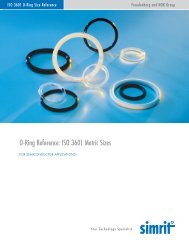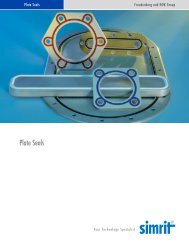Diaphragm Design Manual - Simrit
Diaphragm Design Manual - Simrit
Diaphragm Design Manual - Simrit
You also want an ePaper? Increase the reach of your titles
YUMPU automatically turns print PDFs into web optimized ePapers that Google loves.
<strong>Design</strong> Guideline – Initial <strong>Design</strong> Considerations – See Technical Flyer “<strong>Design</strong> for Manufacturing” Page 62A. Keep the convolution width as wide as safely possible.B. Provide enough space in the hardware to ensure smooth diaphragm movement.C. Whenever possible use a thinner and/or a more flexible material.D. Keep the stroke requirements as small as possible.The “Quick Start” Check List1. What is the diaphragm device’s basic function?a. Regulator – Pressure typically on one side.b. Pump – Pressure typically on both sides.c. Other.2. What are the environmental conditions? – See Page 44a. Temperature range.b. Humidity range.c. Ozone.d. Other.3. Which elastomer should be used? – See Pages 11–14, 15What fluid will contact the diaphragm?i. Passive – Such as distilled water or airii. Aggressive – Such as gasoline or solvents.4. Which fabric should be used, if any? – See Pages 14–15, 27, 30 & Technical Flyer Page 57What are the pressure requirements?i. Under 5 PSI – Fabric reinforcement may not be required.ii. 5 to 10 PSI - Fabric reinforcement will be application dependentiii. Above 10 PSI – Fabric reinforcement will be required.iv. Pressure differentials must be accounted for.v. Pressure spikes must be accounted for.5. Which construction style should be used? – See Pages 17 & Technical Flyer Page 59a. Pressure or aggressive media on one side?i. Should use a one side coated part.ii. May use a two side coated part.b. Pressure or aggressive media on both sides?i. Should not use a one side coated part.ii. Must use a two side coated part.c. What Is the expected stroke length?i. Short to medium? – Can use single or two side coatedii. Long? – Must use one side coated6. Which diaphragm shape should be used? – See Pages 16-24 & Technical Flyer Page 55a. Short stroke – Flat, Low Convoluted or Shallow Draw.b. Medium stroke – Shallow Draw, Convoluted or Drop Center.c. Long stroke – Deep Draw / Top Hat.7. What is the expected cycle rate?a. Test________________b. Use________________8. What is the expected cycle life?a. Test________________b. Use________________9. How will the diaphragm device be assembled? – See Pages 34-37a. Bolted piston and flange.b. Riveted piston and flange.c. Spin crimp or swage.d. Sonic welded.e. Housing:i. Injection molded plastic.ii. Stamped or formed metal.iii. Machined plastic or metal.10. Any additional hardware considerations?a. Return springs required? – See Page 30b. Positive stops required? – See Page 31c. Piston design? – See Pages 34d. <strong>Diaphragm</strong> care? – See Pages 3511. What style of flange will be needed? – See Pages 38-43a. Flat.b. Beaded.c. Gasketed.d. Combination.12. Any special specifications or requirements?a. FDA.© Copyright FNGP 20098



